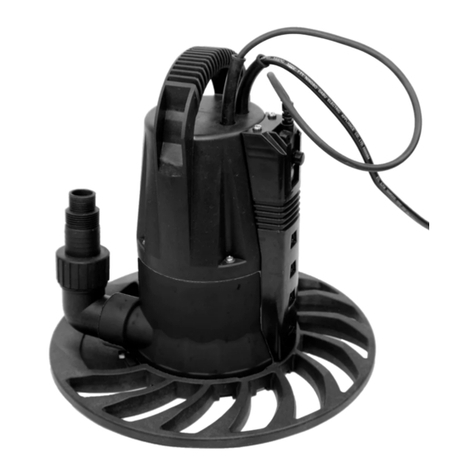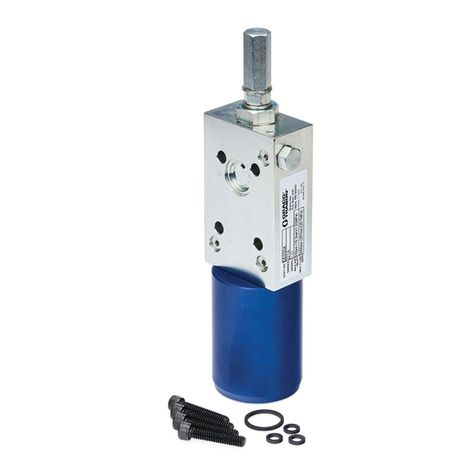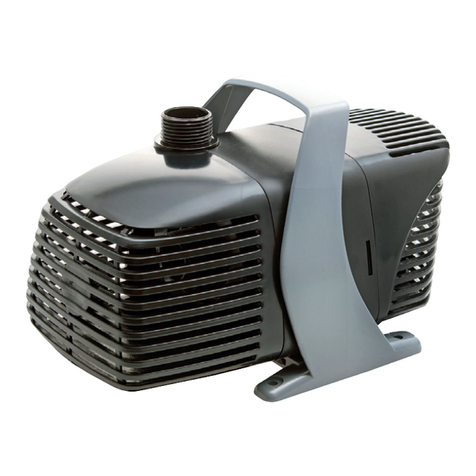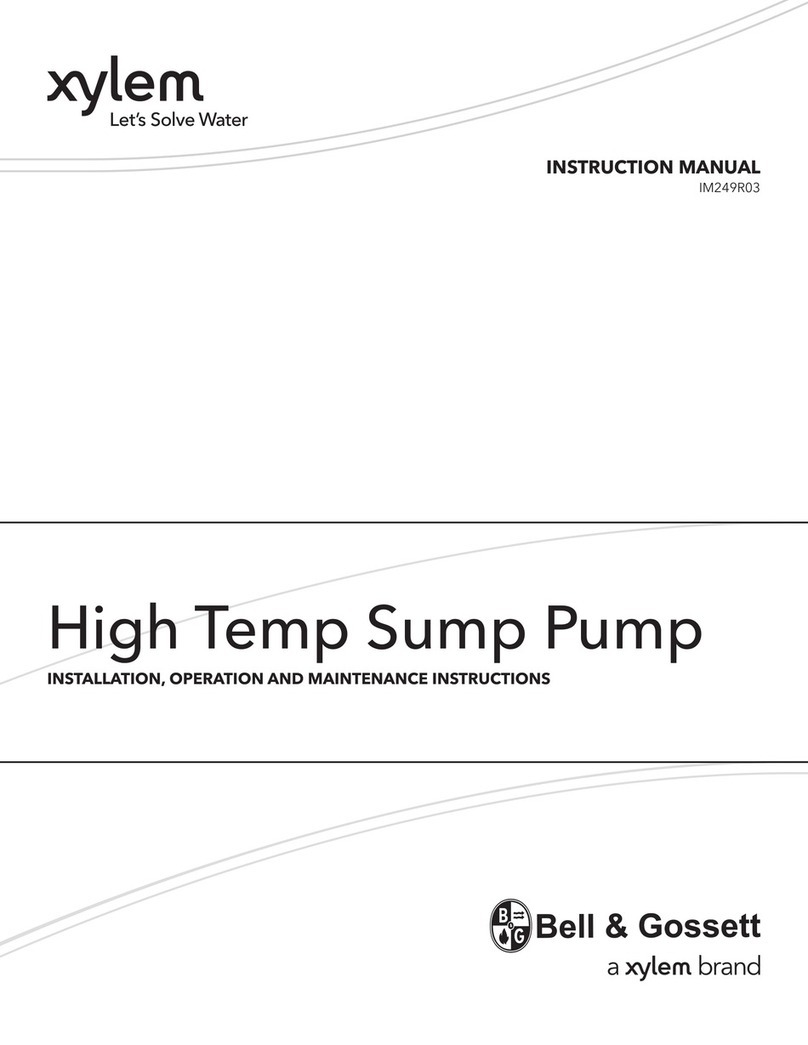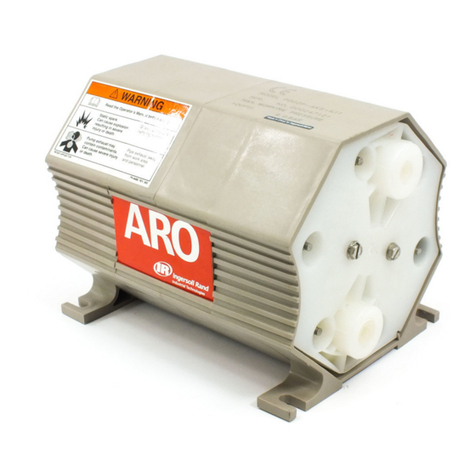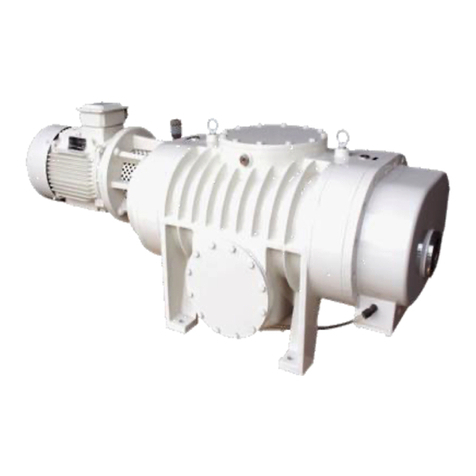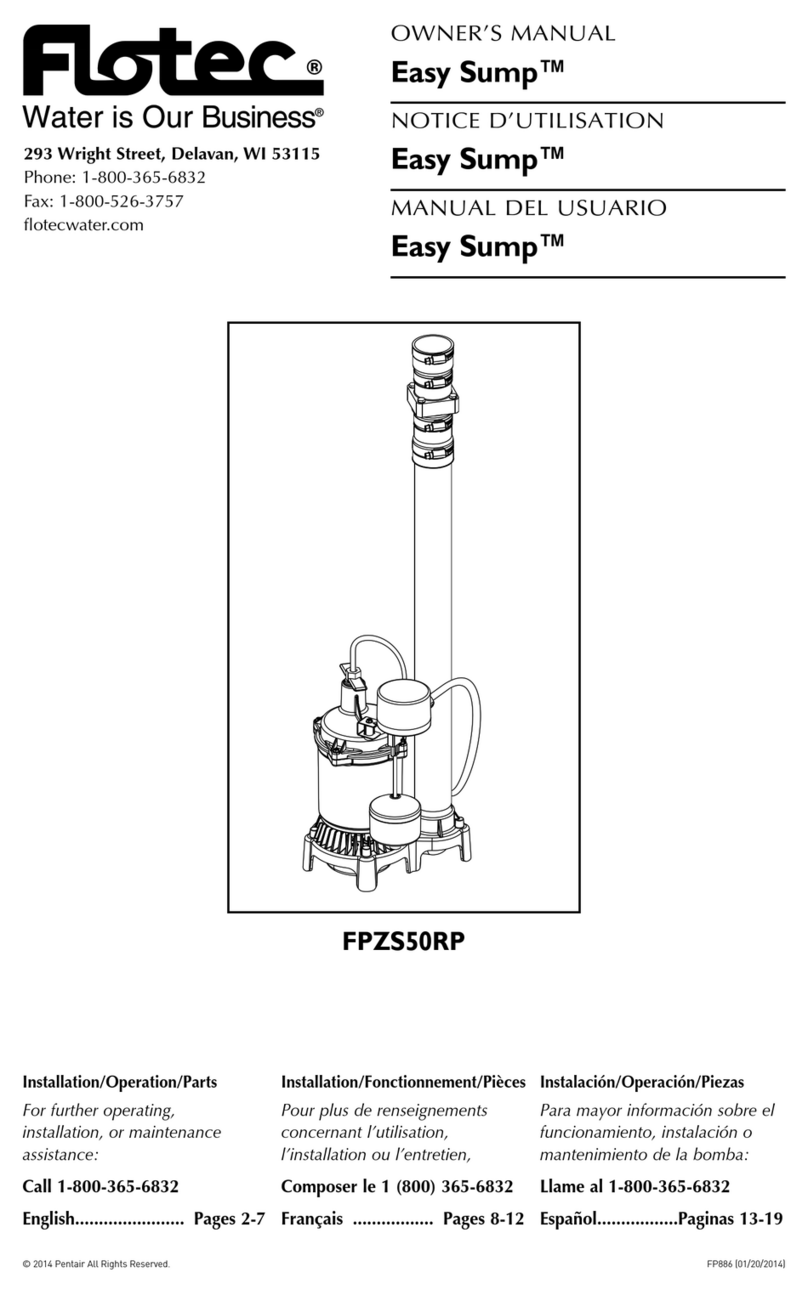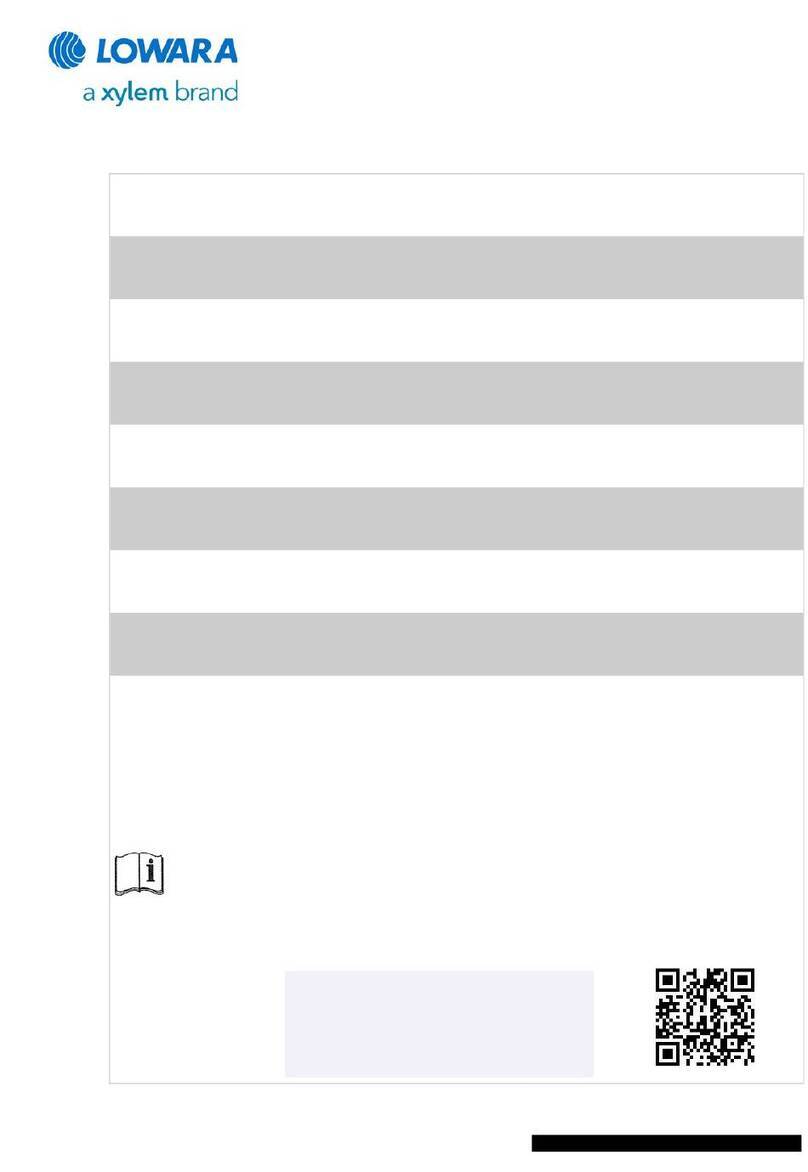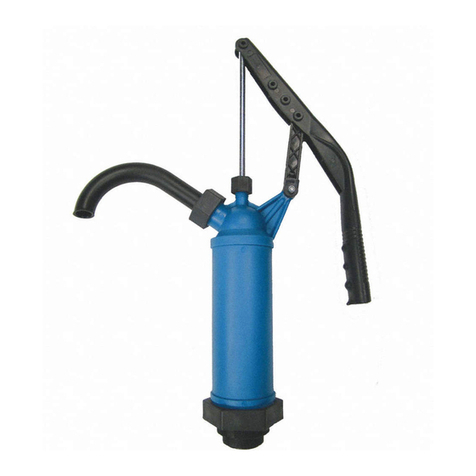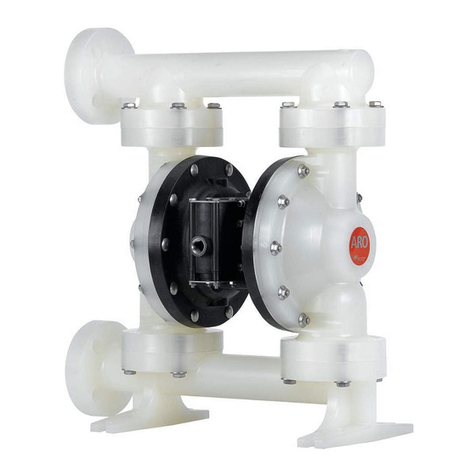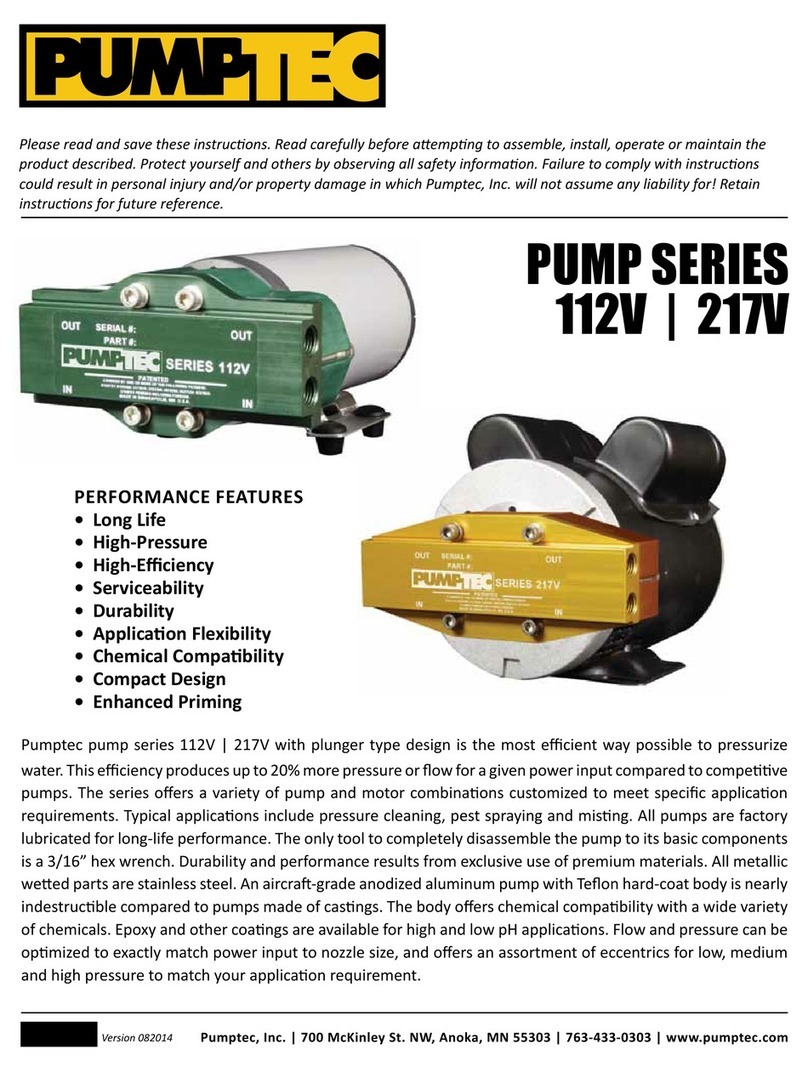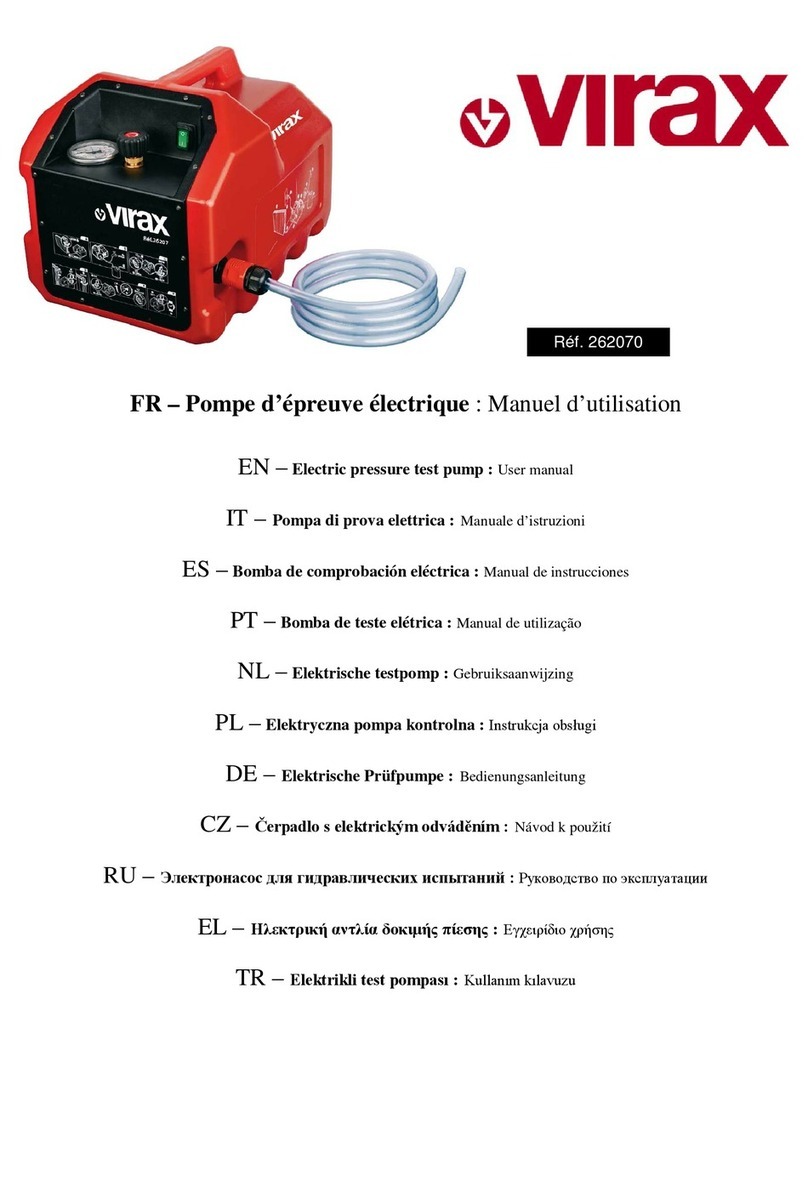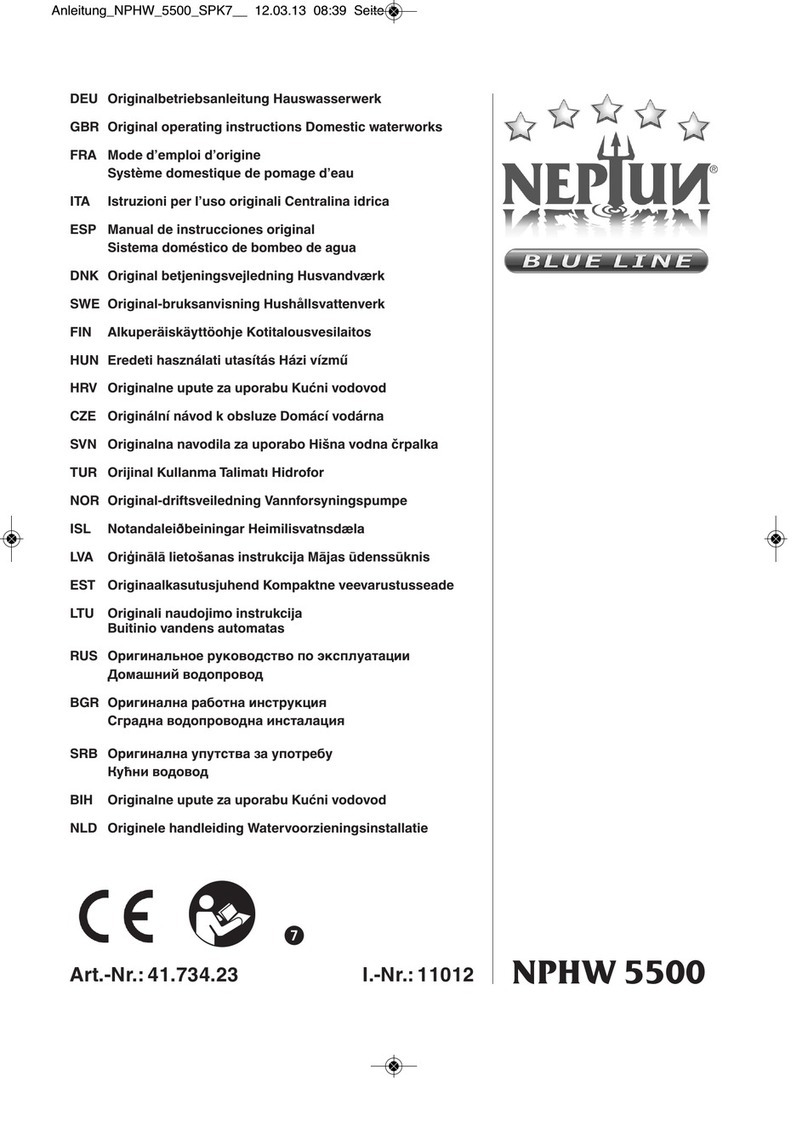
05
ALIGNMENT CHECKS
Initial Alignment (Cold Alignment)
•Before grouting baseplate to make certain alignment
can be obtained
•After grouting baseplate to make sure no changes have
occurred.
•After connecting piping to ensure that alignment
hasn’t been altered by pipe strain. If alignment has
changed alter piping to remove strain.
Final Alignment (Hot Alignment)
•After first run to obtain correct alignment when equip-
ment is at operating temperature.
ALIGNMENT CRITERIA
Good alignment is achieved when the differences
between the readings is .010 or less when the pump is at
operating temperature. However, during the installation
phase it is necessary to set the parallel alignment in the
vertical direction to a different criteria. This is due to the
differences in the expansion rates of the pump and the
motor. The recommended cold settings for electric motor
driven pumps is shown in Table 1.0
Pumpage Temperature Set Driver Shaft
50°F (10°C) .002 in. Low
150°F (65°C) .001 in. High
250°F (120°C) .005 in. High
350°F (175°C) .009 in. High
450°F (218°C) .013 in. High
550°F (228°C) .017 in. High
650°F (343°C) .021 in. High
ANGULAR ALIGNMENT
Check angular alignment with a micrometer or caliper.
Measure from the outside of one flange to the outside of
the other flange at intervals around the periphery of the
coupling, DO NOT rotate the coupling. The difference
between the maximum and the minimum must not
exceed .010".
PARALLEL ALIGNMENT
Check parallel alignment by placing a straight edge
across the two coupling flanges and measure the offset
at various points around the periphery of the coupling.
DO NOT rotate the coupling. If offset exceeds .010"
realign the coupling.
If a correction is necessary to either the angular or paral-
lel alignment, remember to recheck the other for proper
alignment.
TABLE 1: COLD SETTING OF PARALLEL
VERTICAL ALIGNMENT
COUPLING ALIGNMENT PROCEDURE
For trouble-free operation of this unit, proper alignment must be attained. Proper alignment is the responsibility of the
installer and user of this pump.
1. Apply Anti-seizing compound on jack screw to allow for
easy removal after the grout has cured.
2. Cut 6 or 8 round plates from barstock to set the jack
screws on. Chamfering the edges of the plate is recom-
mended to reduce stress concentrations.
3. Set the baseplate on the foundation, then raise it 3/4" to
1 1/2" using the four corner jack screws. At this time, the
two center jack screws should not be touching the
foundation.
4. Place one machinist level lengthwise on a single motor
pad, & another across the ends of both motor pads. (It is
important that the surface being leveled is free of all
contaminants, such as dust, to ensure that your reading
is accurate.)
5. Adjust the four jack screws in order to level the motor
pads to zero in both directions.
6. Turn down the center jack screws until they are resting
on their metal plates.
7. Move the two levels to the pump pads. Place one level
lengthwise on a single pad, and the other across the
middle of both pump pads.
8. Adjust the jack screws to level the pump pads in both
directions.
9. Install the anchor bolts until they are hand tight.
10. Recheck the motor pads for level measurements.
11. Continue adjusting the jackscrews & anchor bolts
until all level measurements are within the requirement
of 0.002 on in / ft.
Before starting any alignment procedure,
ensure that the motor power is locked out. Failure to do
this will result in serious physical injury.
! WARNING !
